A Super Fanless Chassis from TureMetal: For DIY & 0 db Workstations
by Anton Shilov on June 20, 2019 11:00 AM EST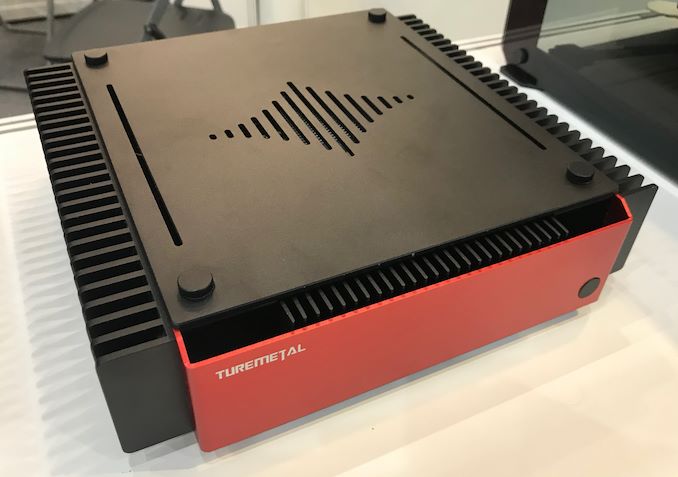
High-performance and DIY desktop computers use either sophisticated air or liquid cooling systems. While there are passively cooled PCs, they typically are either proprietary or work with a limited set of components. Mical Wong, an enthusiast from Shanghai, decided to change that and founded TureMetal Fanless Design Studio, which builds cases for fanless DIY desktops. TureMetal was at Computex this year to show off its latest designs.
TureMetal currently offers five fanless PC cases: the DP2, UP7, UP3, UP5, and UP10, all aimed at different kinds of systems. Three of them are designed for smaller desktops that do not need a lot of compute horsepower, but two of them can be used to build high-performance gaming or workstation PCs with discrete graphics, plenty of storage space and so on.
All the enclosures use the same cooling principle: transfer heat from the key components to large radiators located on the sides of the chassis using heat pipes, almost in effect using the whole chassis as a heatsink. The main advantage – and the main selling point of all cases from TureMetal – is that they are adjustable, with movable vapor chambers to allow the cooling system to match the layout of the installed motherboard.
We are going to start from TureMetal’s cases for lower-power systems. The smallest DP2 chassis only supports Mini-ITX motherboards, can cool down a 50 ~ 70W CPU with integrated graphics, and uses a proprietary PSU. The larger UP3 case is compatible with Mini-ITX platforms carrying a CPU with up to 85 W TDP, but also does not support a standalone video card. The UP7 enclosure looks like a typical Mini-ITX system, can work with appropriate motherboards and can house a discrete graphics card (yet, the unit does not support passive cooling of a GPU natively). It is noteworthy that all of their cases can work with a variety of Mini-ITX motherboards, thanks in big part to its adjustable CPU vapor chambers.
TureMetal’s UP5 and UP10 chassis are considerably larger yet considerably more sophisticated than the other boxes. Both can cool down higher-end CPUs and GPUs and house multiple storage devices. The UP5 can accommodate a Mini-ITX or Micro-ATX motherboard and cool down a performance-mainstream CPU and GPU.
By contrast, the UP10 can house an ATX mainboard. Furthermore, the UP10 can remove 120 ~ 180 W of heat from a CPU as well as 170 ~ 250 W of heat from a GPU, enough for HEDT processors and top-of-the-range graphics cards.
The UP5 and UP10 chassis from TureMetal are naturally the most versatile cases from the company yet as they can accommodate a variety of components and enable a great variety of PCs: from utterly quiet HTPCs to advanced 0 dB fanless workstations.
In addition to its desktop form-factor cases, TureMetal is also developing a tower case that will be rated for an even higher TDP and thus enable even faster PCs. The case is due sometime in 2020, but the company isn't disclosing any firm launch dates.
Right now, TureMetal’s cases can only be bought directly from the company or from Taobao. The manufacturer hopes that as it gets better known, it will gain retail partners in Asia, Europe, and the US, so its cases will be more widely available.
| Want to keep up to date with all of our Computex 2019 Coverage? | ||||||
 Laptops |
 Hardware |
 Chips |
||||
| Follow AnandTech's breaking news here! | ||||||




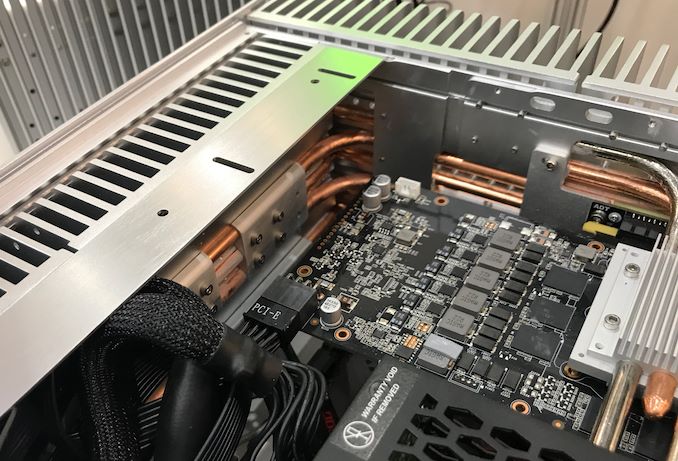

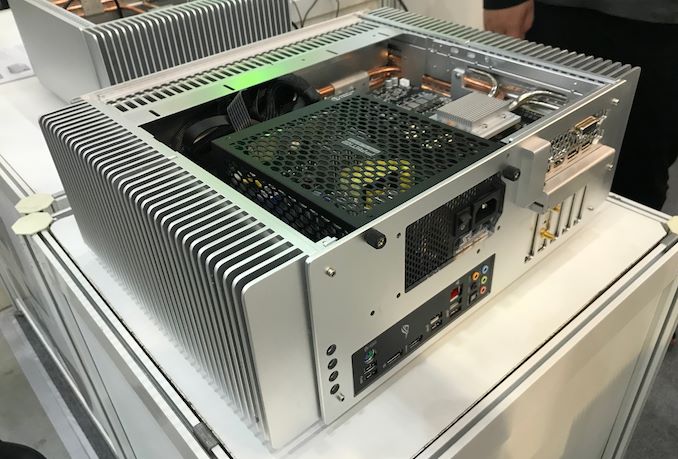
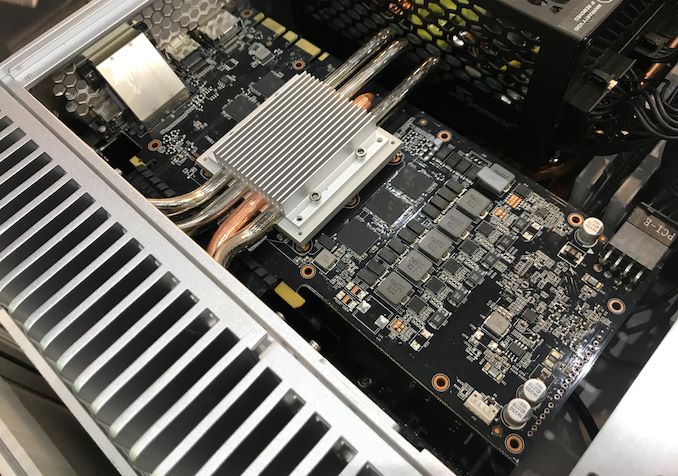
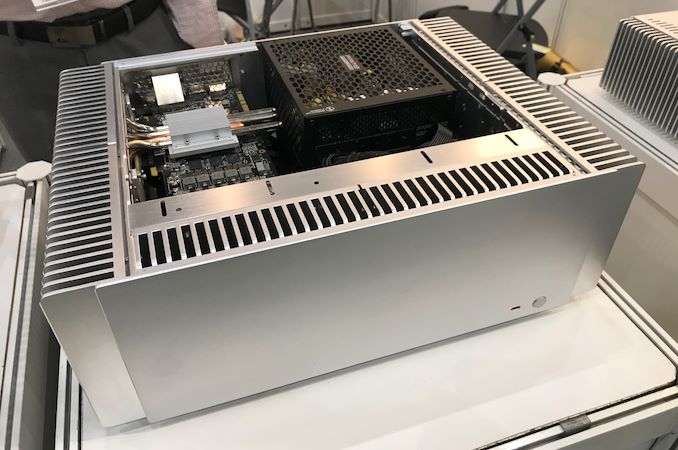
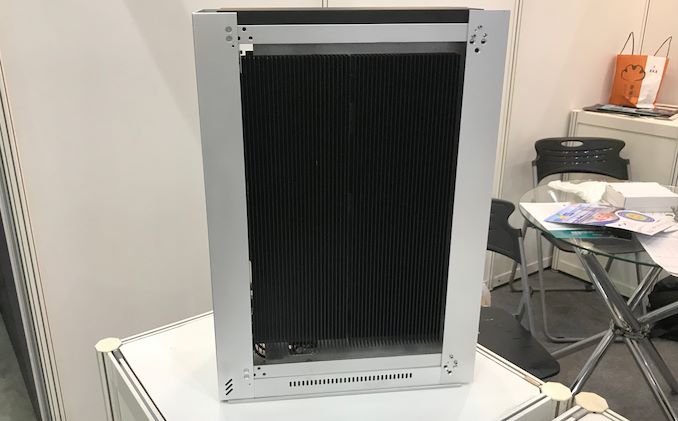
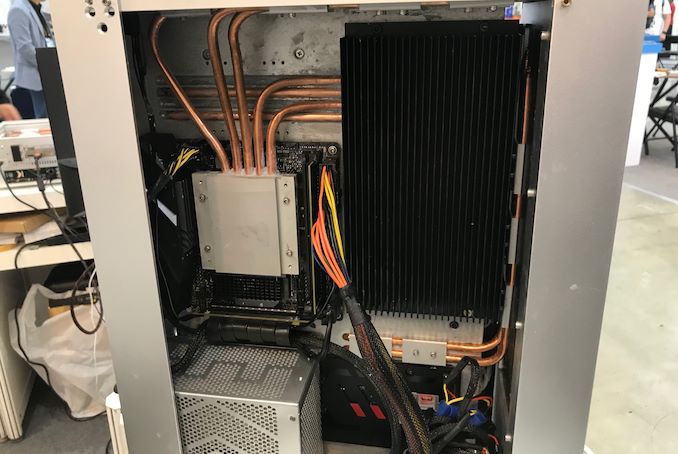








51 Comments
View All Comments
ajp_anton - Friday, June 21, 2019 - link
The sound level is also measured at some distance (1m?). So if it's 0dB at 1m away, and assuming 0dB is inaudible for you, you could still hear it if you get closer.cbm80 - Thursday, June 20, 2019 - link
You are technically correct, which is the best kind of correct.s.yu - Friday, June 21, 2019 - link
I'd love to agree with that but somehow think there's some catch...Drkrieger01 - Thursday, June 20, 2019 - link
These are really neat, however the larger editions that cool the GPU appear to have a major flaw- no GPU VRM cooling. This can severely limit performance as well as the life of your graphics card. Hopefully they improve this before they hit the market!UpSpin - Thursday, June 20, 2019 - link
If you love your electrolytic capacitors on your mainboard... you will spend them some regulated air flow.It's easy to build a 0dB computer with active cooling and standard components. The loudest parts were the hard drives. Without them, low spinning fans and a good case, you won't be able to hear your computer in a silent room either.
lukedriftwood - Thursday, June 20, 2019 - link
Fanless cases are not just about 0dB. As they can be completely sealed with no moving parts, there's zero dust built-up and zero maintenance required throughout the computer's lifetime.mode_13h - Friday, June 21, 2019 - link
Lifetime being defined as "until something breaks"? I agree with UpSpin's point about VRM cooling. Lack of any air movement or other form of cooling will likely shorten the lifespan of those components.s.yu - Friday, June 21, 2019 - link
Are these completely sealed? There's still that...khanikun - Friday, June 21, 2019 - link
Except none of what they are showing is completely sealed.mobutu - Thursday, June 20, 2019 - link
very nice, I'm so buying one of the big-ones when they'll become available later in europe.thanks @tureMetal